Last-mile delivery trends shaping the future of logistics
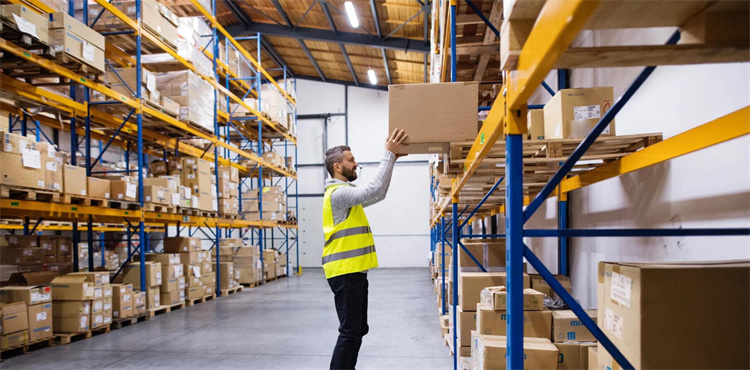
Industry reports say last-mile delivery in 2025 will use AI-powered route optimization, autonomous vehicles, and urban warehousing. These help meet the growing need for fast and clear service. More than 46% of logistics providers now spend money on new technology. JUSDA’s advanced warehouse and digital solutions help businesses keep up with these new trends.
Key Takeaways
AI-powered route optimization and real-time tracking help make deliveries faster. They also make them cheaper and more reliable. This makes customers happier.
Sustainability efforts like electric vehicles and eco-friendly packaging help cut down pollution. They also help companies reach their environmental goals.
Flexible delivery models and smart warehouse systems help companies meet higher customer expectations. They also help with problems in city deliveries.
Last-mile delivery trends 2025
The logistics industry is changing fast. Last mile delivery trends are making companies rethink how they ship packages. In 2025, people will notice faster, clearer, and greener deliveries. JUSDA is leading this change. They use new last mile technology and better warehouse systems in their network. These changes help companies keep up with what customers want. It also helps them stay ahead in a busy market.
AI-powered route optimization
AI-powered route optimization is a big trend for 2025. Logistics providers use machine learning and real-time routing. They look at traffic, weather, and delivery times. These systems pick faster routes and fill vehicles better. Companies like JUSDA use AI tools to guess demand and fix problems before they happen. This saves money and makes deliveries faster.
JUSDA’s JusLink platform uses big data and cloud computing. This gives teams real-time data and flexible ways to work. It helps them act fast when things change.
Industry reports show AI-powered route optimization works well:
Source | Reported Average Reduction in Delivery Time |
|---|---|
TheCodeWork® | 30% reduction (client case study) |
Nasscom (Dec 2023) | 20% average decrease (industry report) |
nuVizz | Up to 25% reduction (product claim) |
Burqup | Up to 20% reduction (brands using AI dispatch tools) |
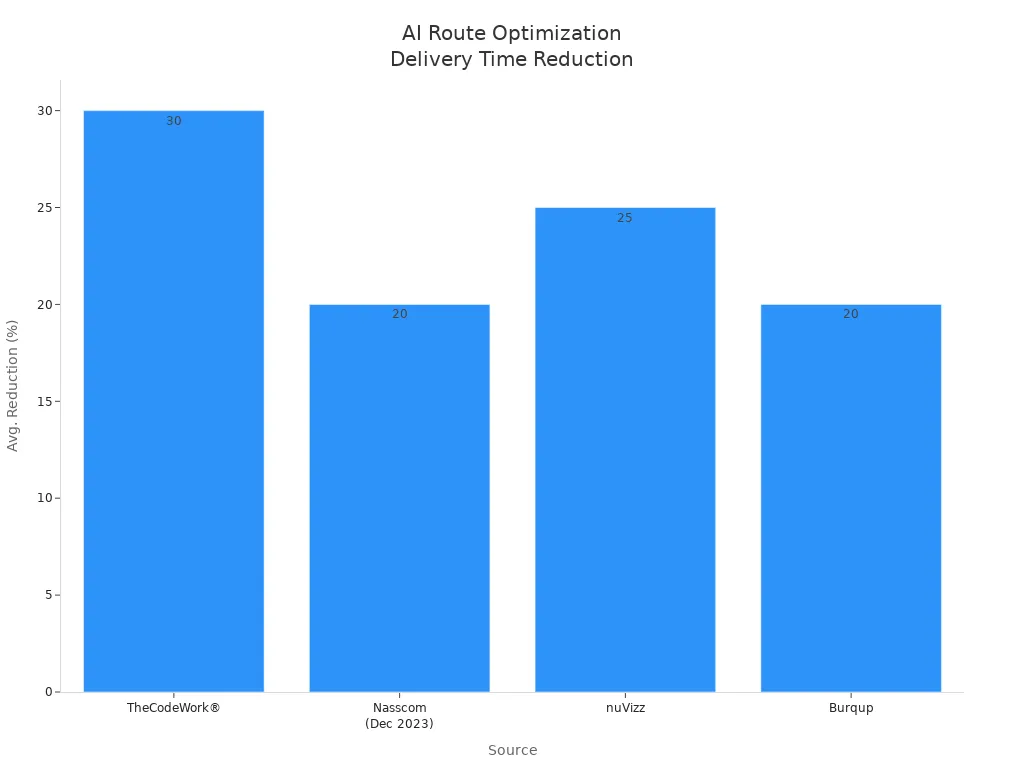
Logistics companies check if these last mile technology solutions work. Cost-per-mile goes down as AI picks better routes. Fuel costs drop by up to 15%. On-time arrivals get 35% better. More packages arrive on the first try. Automation makes planning routes faster and keeps customers happy.
Real-time tracking
Real-time tracking is now a must for last-mile delivery in 2025. Customers want to know when their packages will come. Over 90% of German shoppers use real-time tracking. About 64.4% expect it for every package. Real-time updates make things clear and lower worry. Customers can change plans or give new instructions. This makes things easier and builds loyalty.
Real-time routing and tracking make waiting for a package better. Customers feel calm and involved. This helps brands and makes people buy again.
JUSDA’s warehouse solutions help with real-time tracking. They connect inventory systems with delivery platforms. This gives correct ETAs and quick updates. Good real-time tracking means fewer missed deliveries and less frustration. This leads to higher Net Promoter Scores and better reviews. Companies that focus on real-time tracking see happier customers and smoother operations.
Sustainability initiatives
Sustainability initiatives are shaping last mile delivery in 2025. Logistics providers need to cut emissions and clean the air, especially in cities. JUSDA uses carbon-neutral warehouses and electric vehicles for last-mile delivery. This matches global goals for the environment.
Sustainability Dimension | Environmental Benefits in Last-Mile Delivery Initiatives |
|---|---|
Environmental | Less greenhouse gas, cleaner air, fewer resources used, follows rules |
Social | Safer and better jobs in last-mile logistics |
Economic | More productivity and profits for logistics providers |
Cities use curb space management and public charging for electric vehicles. This helps lower emissions from last mile delivery trucks. These steps make city air cleaner and help neighborhoods with pollution problems.
JUSDA’s work on green last-mile solutions has won awards for being a leader in tech and eco-friendly logistics.
Challenges with last mile delivery
Last-mile delivery has many problems for companies and customers. These problems include high costs, missed deliveries, and hard-to-plan routes. Companies need to fix these issues to stay ahead and make customers happy.
Urban congestion
Urban congestion is a big problem for last mile delivery. Traffic jams and crowded streets slow down delivery trucks. There is not much parking, so trucks have trouble stopping. This causes delays and makes costs go up. Trucks sometimes cannot find a place to load or unload. This means some packages arrive late. Surveys show smaller vehicles, cargo bikes, and drones can help. Companies use AI-powered route optimization to pick better roads. JUSDA’s warehouse network and digital tools help with different ways to deliver. This makes it easier to move packages in busy cities.
Delivery accuracy
Delivery accuracy is very important in last mile logistics. Sometimes, deliveries fail because people are not home. Sometimes, drivers cannot get into buildings. Each failed delivery costs companies more money. It can cost $17 or more each time. Failed deliveries also make on-time rates worse. Customers are not as happy. JUSDA’s real-time tracking and warehouse systems help fix this. They give correct ETAs and let people choose when to get packages. This means fewer failed deliveries and lower costs for companies.
Rising consumer expectations
Customers want more from last mile delivery now. They want their packages faster and want more choices. People expect real-time updates and clear information. Meeting these needs is hard and costs more money. Companies must use new technology and digital tools to keep up. JUSDA’s warehouse and AI-powered platforms help businesses meet these new demands. This helps companies give good service and keep customers coming back.
AI and automation in last mile delivery
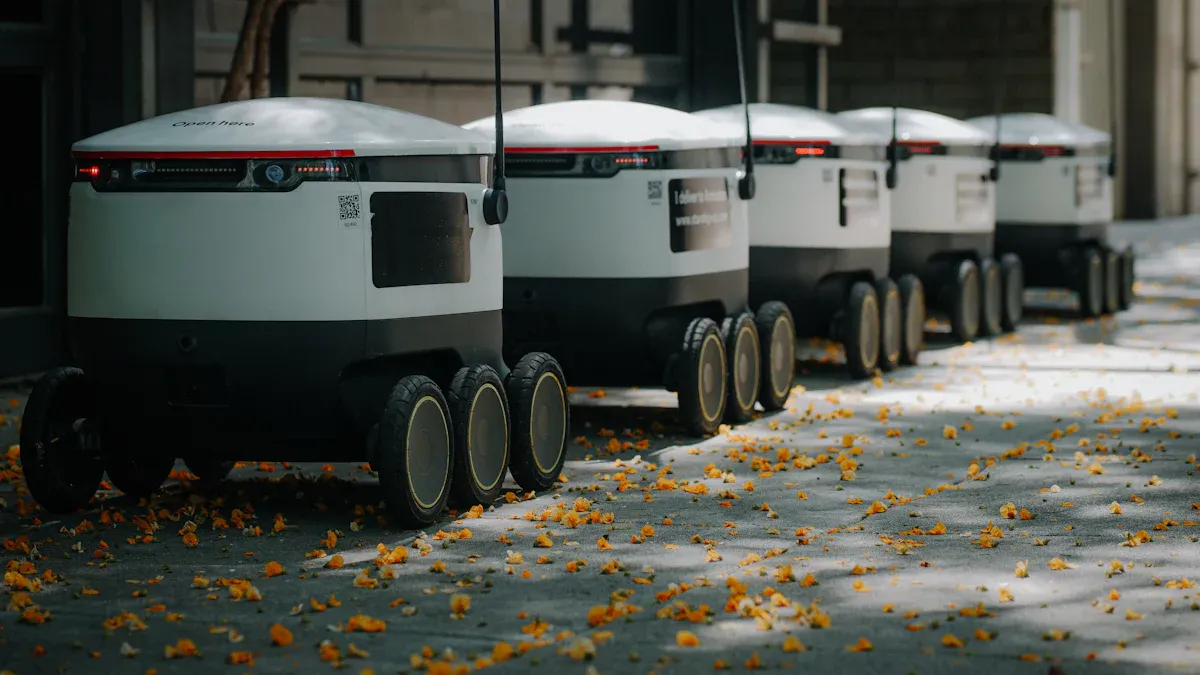
JusLink’s AI solution
AI and automation are changing how last-mile delivery works. JUSDA’s JusLink AI solution helps teams pick the best routes. It uses ai-powered route optimization. The system checks things like traffic, weather, and delivery times. This helps drivers skip delays and use less fuel. JusLink links with warehouse systems to watch inventory and orders. Teams get updates right away and can act fast.
The benefits of using AI and automation in last-mile delivery are easy to see:
Benefit | Description | Example |
|---|---|---|
Route Optimization | AI picks the fastest routes. This saves fuel and time. | McKinsey: 10-30% cost reduction |
Automation | Robots and software do simple jobs. This makes work faster. | Amazon uses 200,000 robots in warehouses |
Predictive Analytics | AI guesses what people will order. This helps plan better. | DHL predicts package demand |
Customer Interaction | AI chatbots give updates and answer questions right away. | FedEx’s chatbot improves response times |
Sustainability | AI cuts down empty trips and lowers pollution. | UPS saves millions of gallons of fuel |
JusLink’s ai-powered route optimization and real-time routing help companies deliver faster. Customers get better service and know when packages will come.
Autonomous vehicles and drones
Autonomous vehicles and drones are making last-mile delivery smarter. Companies like Amazon and UPS use self-driving vans and drones for packages. These smart systems work all day and night. They reach places trucks cannot go. Drones fly over traffic and bring small packages fast. Autonomous vehicles use sensors and cameras to stay safe and pick good routes.
The market for autonomous last-mile delivery is growing quickly. In 2023, it was worth $18.7 billion. By 2033, it could reach $144.2 billion. These tools lower labor costs and help the environment. But there are problems like rules, high costs, and new things needed to make them work. Drones are best for light, urgent packages. Autonomous vehicles move bigger loads between warehouses and homes.
Real-time visibility and tracking
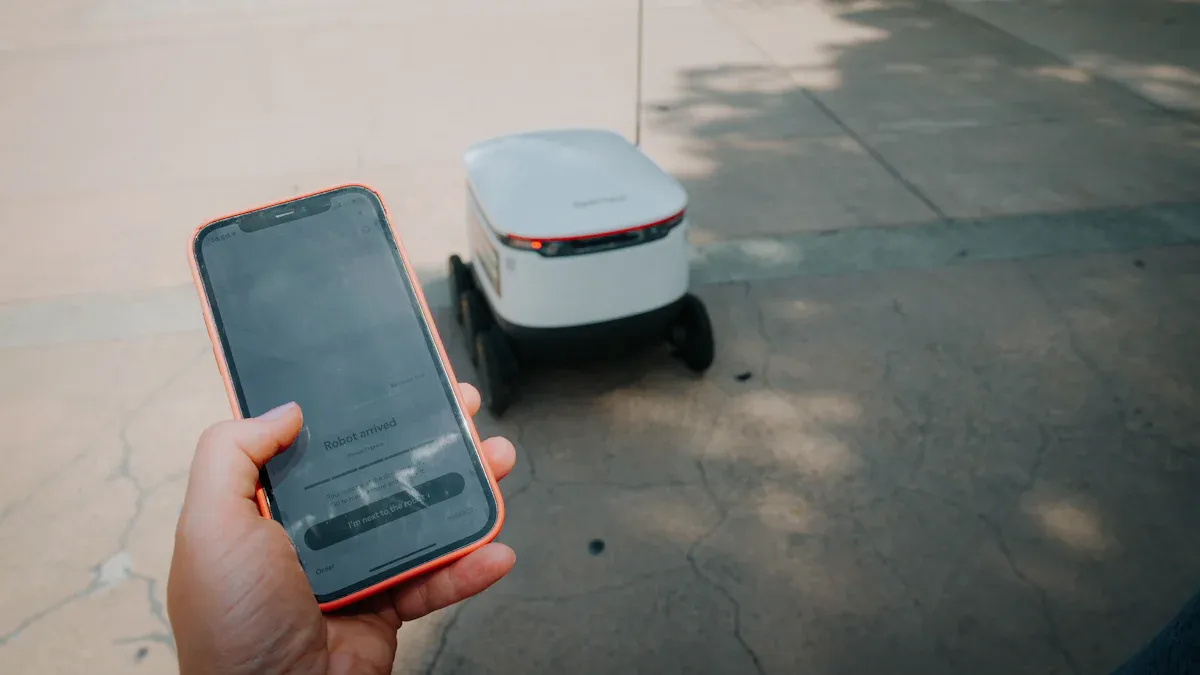
Customer experience
Real-time visibility is now very important for last-mile delivery. Logistics teams use live tracking to give updates to customers. Customers can see where their packages are at any time. They also get estimated times for when their orders will arrive. This helps customers trust the company more. When companies share updates, customers feel less worried about delays. On-time deliveries get better because dispatchers can change routes fast. Real-time visibility also means fewer missed deliveries. Customers can change drop-off times or places, which makes things easier.
Real-time tracking lets businesses tell customers about delays and new arrival times. Being open with customers makes them happier and more likely to buy again.
Companies use dashboards to watch delivery performance. These tools help managers find problems and fix them quickly. Automation means drivers do less paperwork and can deliver faster.
Inventory transparency with JUSDA warehouse
JUSDA’s warehouse technology helps teams see what is happening in real time. The JusLink Smart Supply Chain Real-time Collaboration Platform uses RFID and warehouse systems to track inventory. This setup gives teams control over stock and orders as they move. Real-time data helps companies plan better and avoid slowdowns. Predictive analytics show when inventory changes, so teams can act quickly.
Real-time visibility lets managers check inventory at every step.
Connecting last-mile tracking systems helps warehouses and drivers work together.
Alerts warn teams before delivery mistakes happen.
Electronic proof of delivery and status updates help stop errors.
JUSDA’s platform gives full transparency, making last-mile delivery more dependable. Businesses can plan routes better and use resources well, so there are fewer failed deliveries and lower costs. Real-time visibility helps build trust with customers and supports e-commerce growth.
Sustainable last mile delivery
Green vehicles
Green logistics is changing how last-mile delivery works. Electric vehicles and hybrid trucks are seen more in cities. Companies pick these vehicles to make less pollution and less noise. JUSDA uses electric fleets and carbon-neutral warehouses. These choices help reach world sustainability goals. Green vehicles also save money on fuel and help city air stay clean. Many cities help electric vans with charging spots and special parking. This trend makes logistics providers try new technology and change how they deliver. JUSDA’s work in green logistics is a good example for others.
Electric vehicles and smart route planning help make last-mile delivery greener. Logistics teams have fewer delays and save more fuel.
Eco-friendly packaging
Eco-friendly packaging is important for green logistics. Companies use reusable containers and packing that breaks down naturally. They make packaging lighter and smaller to cut waste and pollution. Many providers stop using single-use plastics and use recycled cardboard or plant-based options. Right-sized packaging helps use less space and makes delivery better. JUSDA uses green packaging from the warehouse to the last mile. Teams use both recycled and new paper to keep products safe and packages light. AI tools help meet green rules and goals. Customers like packaging that is safe for the earth and can be used again.
Lighter, smaller designs to cut waste and pollution
Reusable containers and right-sized packaging systems
Less packaging waste and lower carbon footprint
Matches what customers want for green logistics
JUSDA’s focus on green logistics and eco-friendly packaging follows world trends in sustainable last-mile delivery. These actions help companies meet what customers want and care for the planet.
Flexible delivery models
Flexible delivery models are changing last-mile logistics. Companies try new ways to meet what customers want. They also want to work faster and better. JUSDA’s global warehouse network helps businesses give more choices. Their omnichannel solutions help companies deliver faster service.
Omnichannel fulfillment
Omnichannel fulfillment lets companies handle orders from many places. Retailers use one inventory system and smart order tools. They connect stores, warehouses, and online shops together. This helps teams fill orders fast and ship from the best spot.
Many businesses now use omnichannel fulfillment. Lots of retailers work with third-party logistics providers for last-mile delivery. Reports say 70% of companies now offer doorstep delivery. Outsourcing last-mile delivery saves money and helps reach more people. JUSDA’s network links warehouses and delivery teams in many areas.
Omnichannel fulfillment gives customers more ways to get packages. They can pick same-day or scheduled delivery. Real-time tracking and clear updates help customers trust the company.
Micro-fulfillment centers
Micro-fulfillment centers, or MFCs, are small, smart warehouses near customers. These centers fill orders fast and send out packages quickly. Companies put MFCs in cities to make delivery routes shorter and save money.
MFCs use robots and smart software to pick and pack.
Being close to customers means same-day or next-day delivery.
Automated systems keep popular items ready to ship.
Shorter routes use less fuel and cost less to deliver.
MFCs can grow or shrink to match how many orders come in.
JUSDA’s micro-fulfillment solutions help companies deliver faster and save money. Customers get their orders quickly, and companies spend less on shipping and workers.
Practical solutions for logistics providers
Actionable steps
Logistics providers have many problems with last-mile delivery. They can do some things to get better results and make customers happy:
Use smart routing and good dispatching to save miles, fuel, and time. This can lower fuel costs by up to 20%.
Use real-time tracking and automatic messages for customers. These tools give correct ETAs and help customers trust the company.
Try dynamic route planning and flexible schedules. These help teams deal with traffic and parking in cities.
Use live tracking and let recipients share their delivery choices. These features help stop failed deliveries from wrong addresses or missed drop-offs.
Add green steps, like planning routes that use less fuel and using electric vehicles. These actions help follow environmental rules.
Automate returns with special tools. This can cut labor costs by up to 25% and make customers happier.
Manage many delivery partners with one platform. This helps fix driver shortages and lets companies see how carriers are doing.
These steps help logistics providers solve last-mile delivery problems and work better.
Staying competitive with JUSDA
JUSDA gives last mile technology solutions to help logistics providers stay ahead. Their strong warehouse network and JusLink AI platform help with real-time tracking, route planning, and seeing inventory. Teams can handle orders, track packages, and react to changes fast. JUSDA’s focus on automation and green steps helps companies save money and meet green goals.
JUSDA’s solutions help logistics providers change, grow, and give better service in a changing market.
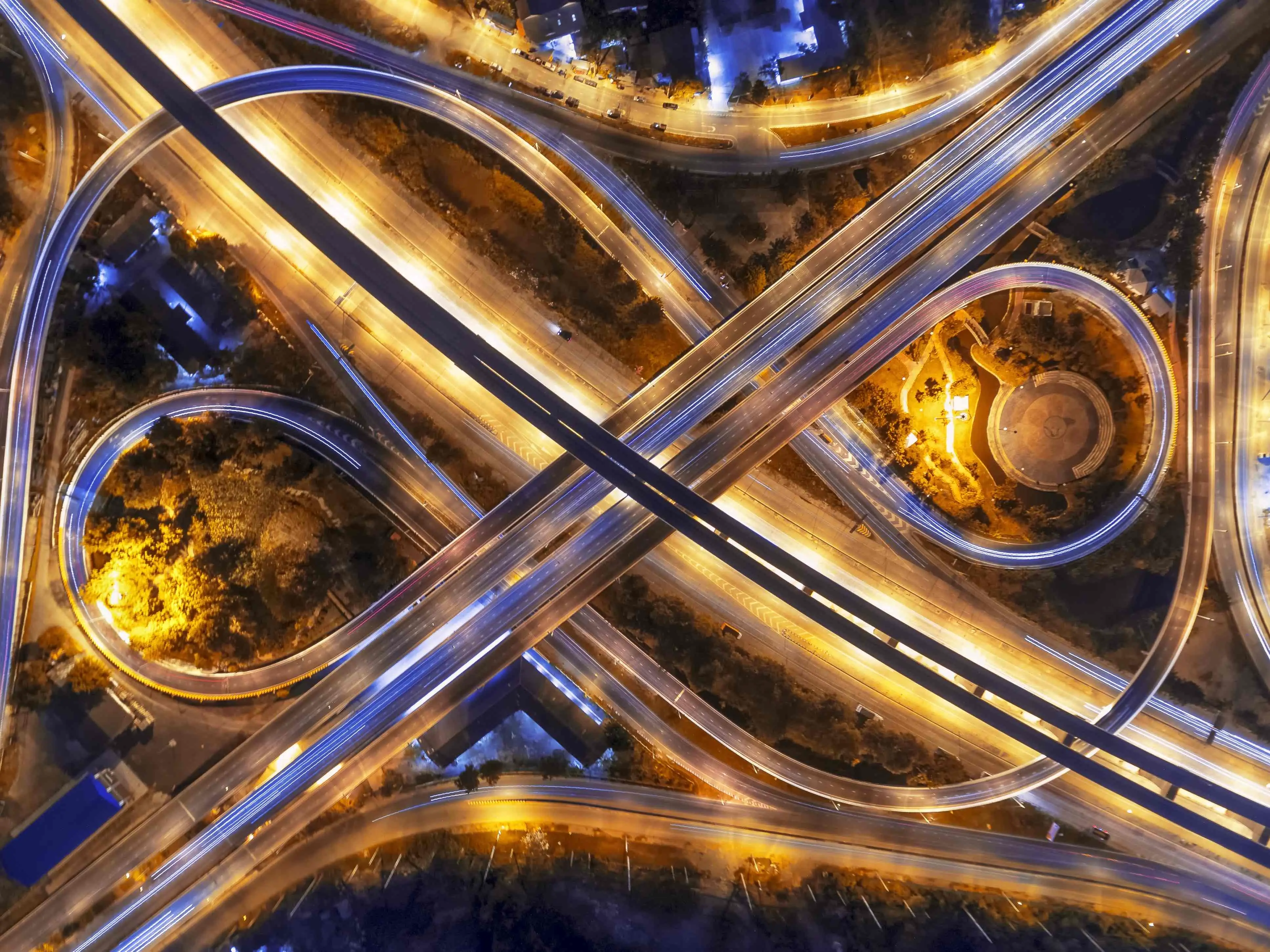
JUSDA Solutions
To provide you with professional solutions and quotations.
Last-mile delivery trends are making logistics different. JUSDA’s new ideas help companies deliver faster and cleaner. Businesses get ahead when they use new technology and flexible ways. Teams should try better warehouse systems and AI-powered solutions. These actions help companies grow in last mile delivery.
See Also
Paving The Way For Logistics Through Digital Innovation
Transforming Supply Chains With Artificial Intelligence Advances
Top Five Trends Shaping Tomorrow’s Supply Chain Efficiency
Exploring Cutting-Edge Technology Driving Future Logistics Success
